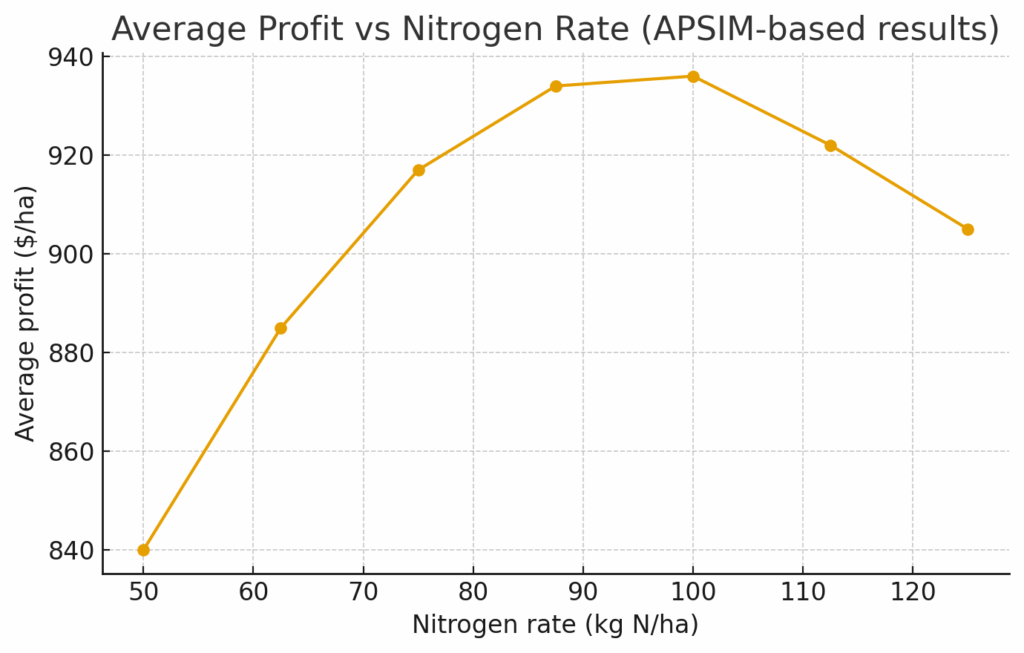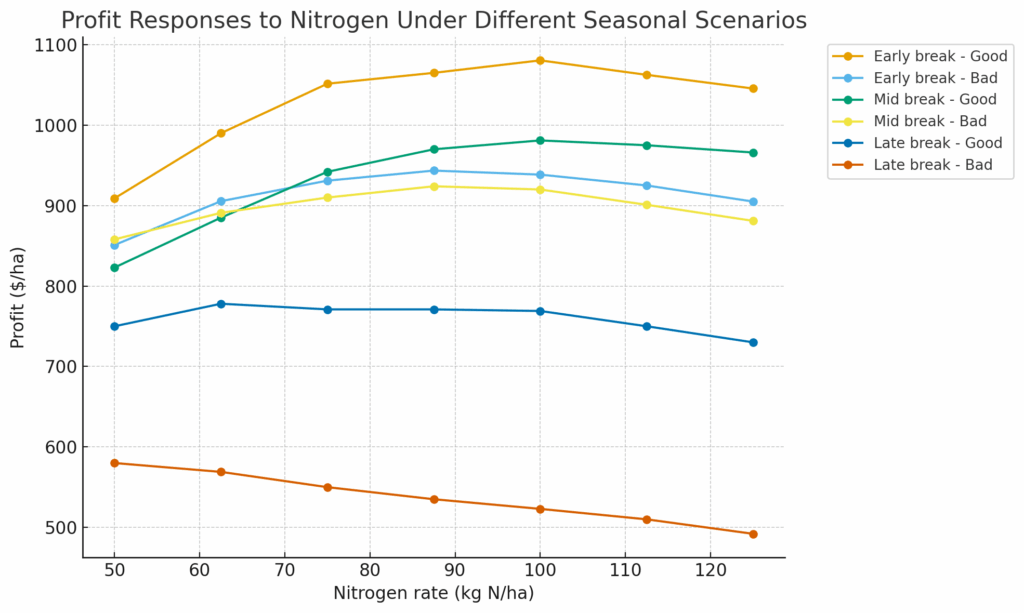Nitrogen (N) is one of the biggest drivers of grain yield and farm profit — but it’s also one of the hardest to get right. Apply too little and yield suffers. Apply too much and the cost in dry years can hurt.
Nitrogen Strategy
Recent modelling from the Central Great Southern shows that if a fixed level of nitrogen is applied every year, the profit-maximising long-term strategy is to run a relatively high N rate.
Profits steadily increase up to about 100 kg N/ha, where they peak at around $936/ha. Beyond this point, profits flatten and begin to fall.
This supports what many growers already do: apply plenty of nitrogen as the safest long-term bet. In good years, the extra grain produced more than compensates for the wasted N cost in poor ones.

(Figure 1: Average profit vs nitrogen rate for a wheat in Kojonup averaged over 37 year period)
Tactical N Adjustments
The timing of the season break and the amount of spring rainfall are the major yield drivers in the Central Great Southern. Profit can be lifted by making tactical adjustments to N rates based on known seasonal conditions.
Top-up nitrogen is usually applied around early stem elongation (mid-July to early August). By this stage, farmers know the timing and quality of the season break — but have little certainty about the upcoming spring.
Medium-term climate forecasts can help fill this gap. An evaluation of 37 years of data using the ACCESS-S2 hindcast model showed 68% accuracy in predicting whether spring rainfall would be above or below average. When this forecast information was combined with early-season conditions, optimal tactical N adjustments could be identified.
The main value of tactical N was in saving costs in unfavourable years. For example, after a late break, fertiliser can be dropped by up to 40%, reducing costs without hurting yields. Because forecasts are not perfect, the adjustments are cautious. With 100% accuracy, larger swings in N application would be justified.

(Figure 2: Profit responses under different seasonal scenarios)
Take-Home Messages
- High N is still the baseline. Over the long term, the gains in good years outweigh the losses in bad ones.
- Tactical N trims risk. The value is in cutting back in poor years, especially after late breaks.
- Forecasts are useful, but not perfect. At 68% accuracy, they support cautious adjustments rather than big swings.
- The principle is simple: align nitrogen with seasonal potential, not just the calendar.
